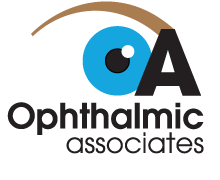How is Cataract Surgery Performed?
At Ophthalmic Associates, our team is proud to offer advanced technology and surgical processes to our patients, including the use of premium intraocular lenses.
Before Your Surgery
Before your surgery, our team will discuss various types of lens implants with you. How you see after surgery will depend on the type of lens implant used. It is vital that you discuss your lifestyle and vision expectations so that we can determine the right premium lens implant for you. Before your surgery, our team also uses technology like IOLmaster, OCT, HVF, and ORBSCAN, to ensure the best process for your specific surgery and vision needs.
During Your Surgery
Cataract surgery is relatively “patient-friendly.” It is usually performed as an outpatient procedure in less than 15 minutes. “Phacoemulsification” is the microsurgical technique used. It requires a tiny incision and breaks up the cataract with ultrasound waves.
- Patients are given topical numbing drops and IV sedation, or twilight anesthesia, to ensure that they are comfortable and relaxed.
- The surgeon makes an incision and uses ultrasound waves to break up the hard, yellow proteins that form the cataract, leaving the lens membrane in place.
- Next, a soft, flexible synthetic Intraocular Lens (IOL) is inserted into the lens capsule of the eye.
- The lens is a permanent fixture that helps your eye to focus. You will not be able to feel or sense the implanted lens in any way.

After Your Surgery
Because there are no needles or injections, only a tiny incision, stitches and an eye patch are often not required after the surgery. In most cases, the incision is so small that the eye heals rapidly, with little or no discomfort, and the patient experiences a quick visual recovery. Patients can typically return to normal activities within a few days. Additionally, Ophthalmic Associates utilizes DROPLESS technology so you don’t need to pay for or worry about putting in eye drops after your surgery.



